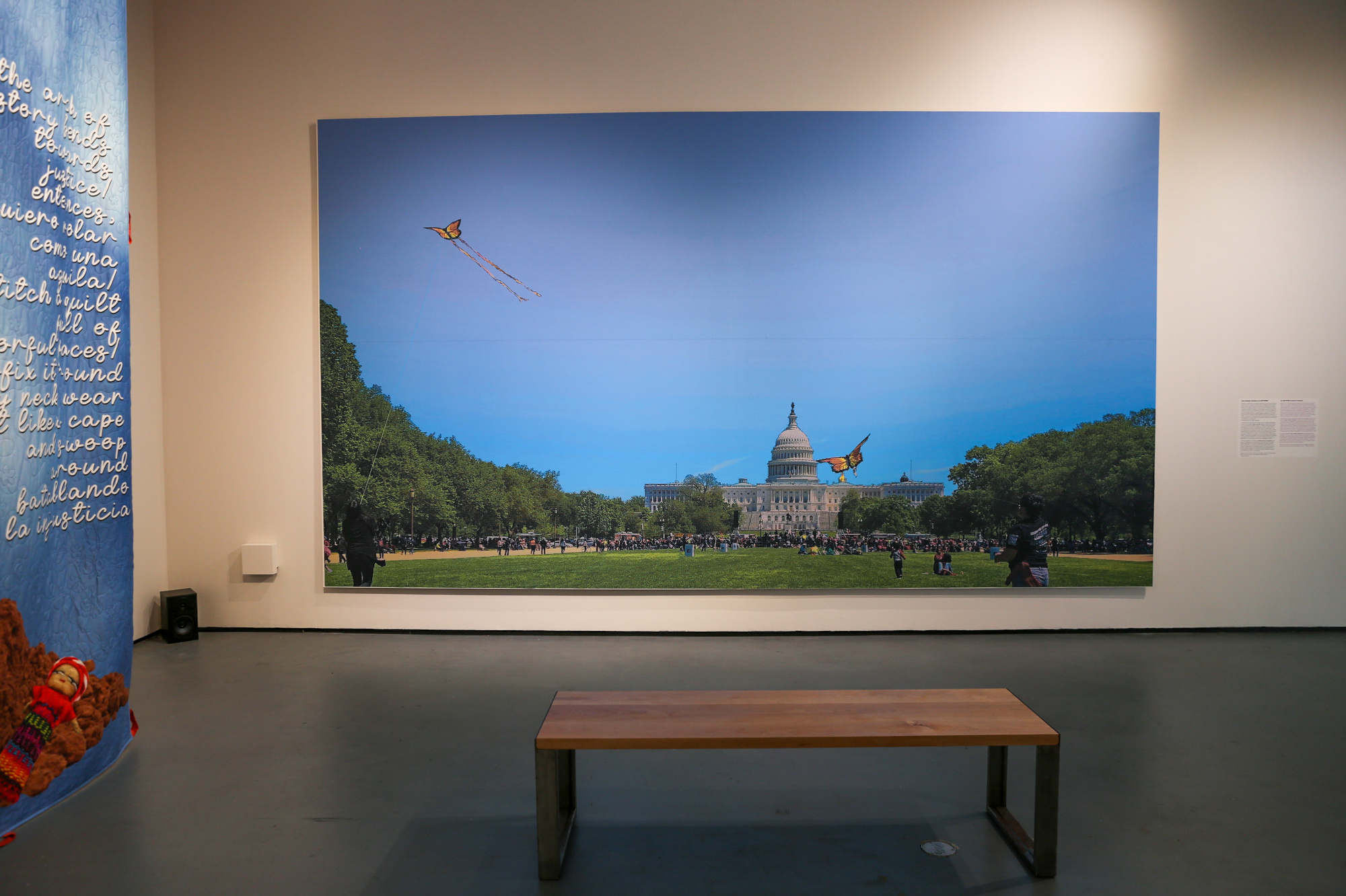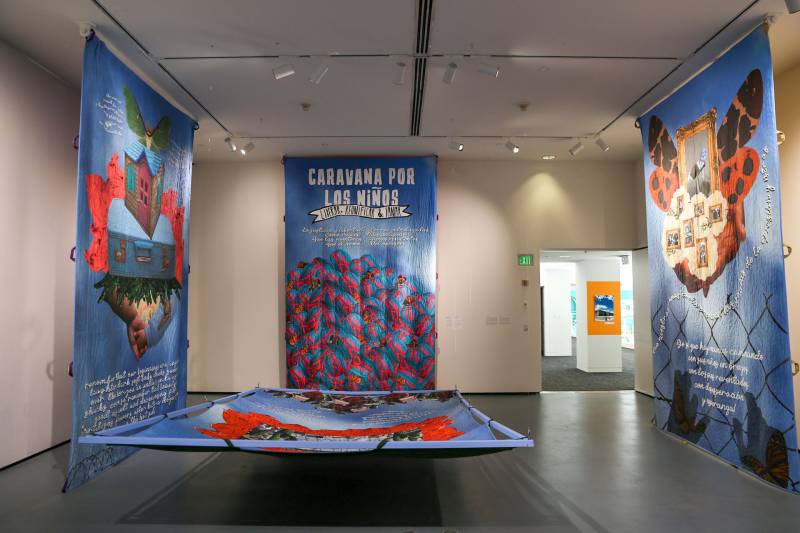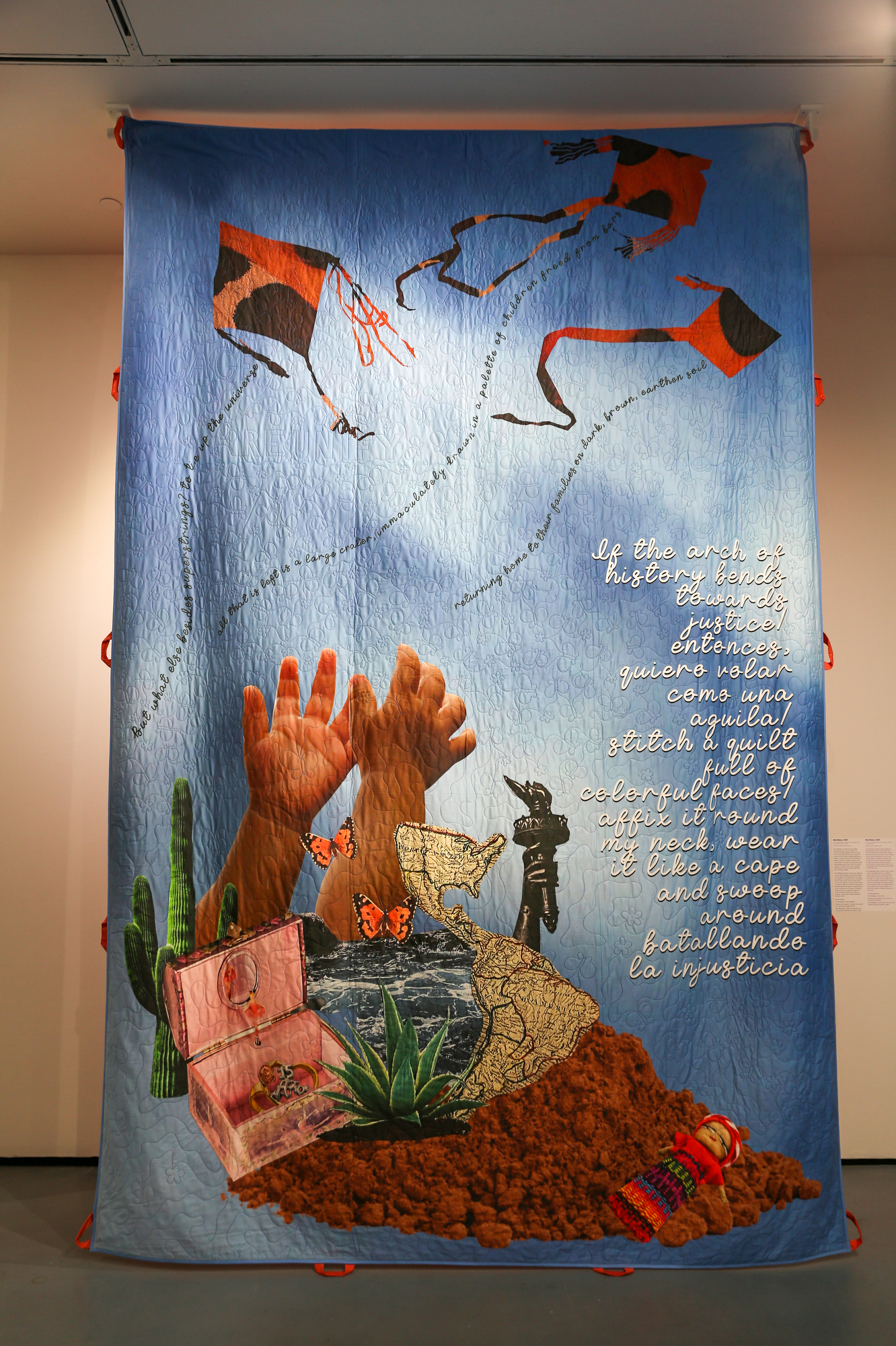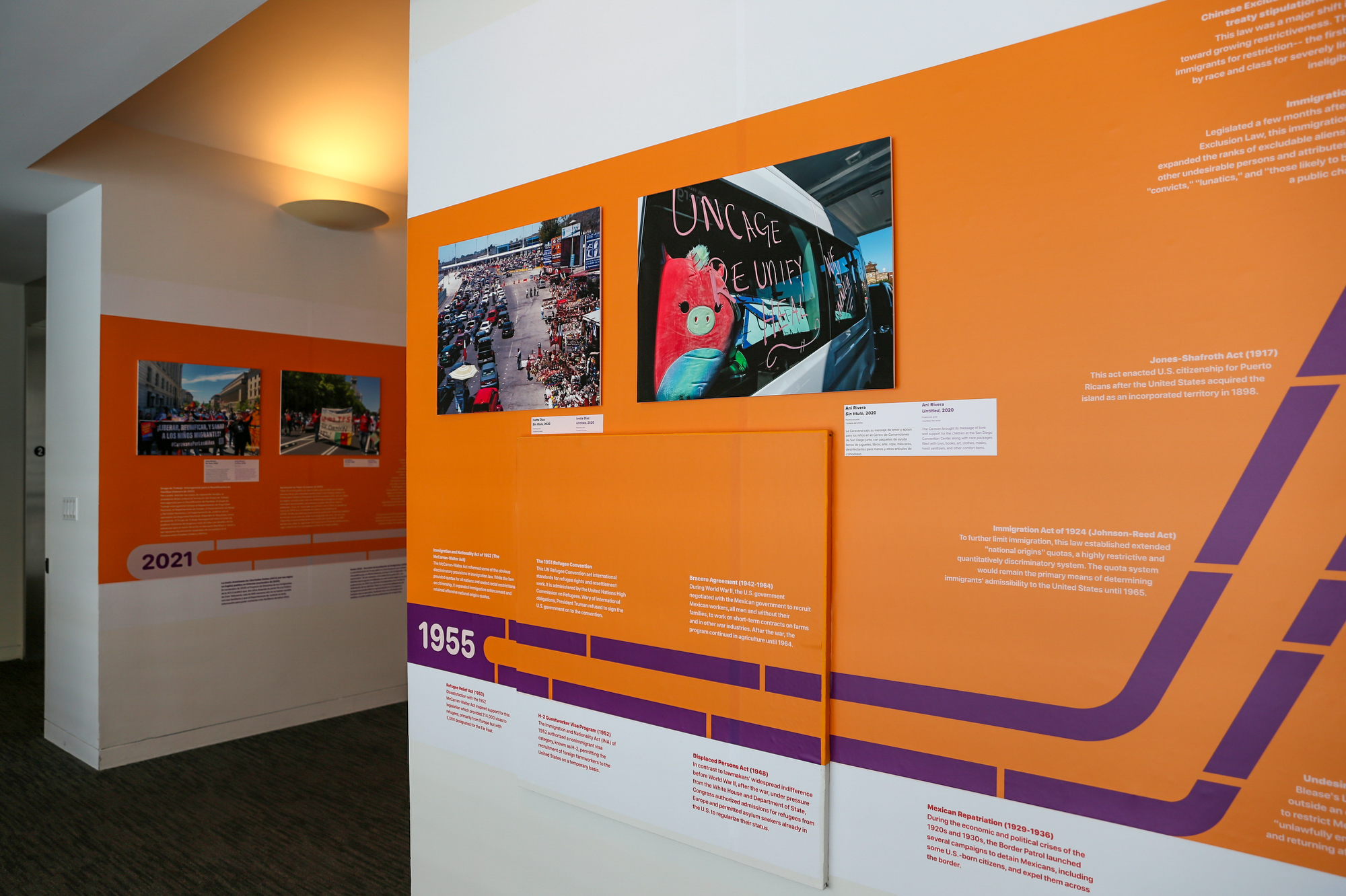Art and activism have often been used as tools to aid one another to demand the same outcome: change.
By raising awareness around social topics and political injustices, both artists and activists can illuminate otherwise overlooked topics through intense engagement, factual information and imaginative provocation. This powerful synthesis is even more striking when marginalized groups become the central focus of these efforts, presenting the audience with a call to action for those in need.
Such is the experience at the Galería de la Raza-organized show Pedagogy of Hope: Uncage, Reunify, Heal at Yerba Buena Center for the Arts, an exhibit that explores the painful subject of detained undocumented migrant children in the United States.
The exhibition is rooted in Caravan for the Children, a nationwide “100-day effort to demand the release, reunification and healing of migrant children still being held in ICE custody across the country,” that launched in 2021. Pedagogy of Hope is an outgrowth of that fight for justice in the wake of the brutally inhumane immigration practices enacted by the 2018 Zero Tolerance Policy, its lasting effects and continued separations. The artists at YBCA convey the urgency of this matter in a creative way, utilizing poetry, textiles, sound and memory to galvanize viewers into political agitation.

Far from being a static exhibit, the display of multidisciplinary art and sociohistorical context encourages viewers to not only consider the harsh realities of U.S. political violence, but to act against them. For instance, the curators, Ivette Diaz and Ani Rivera from Galería de la Raza, directly invite visitors to exert their political agency by writing postcards to the U.S. Department of Homeland Security.





